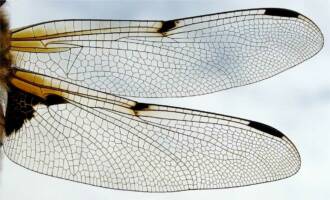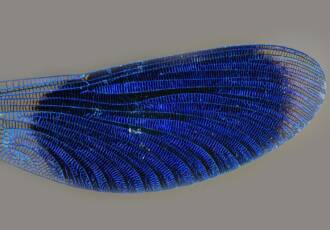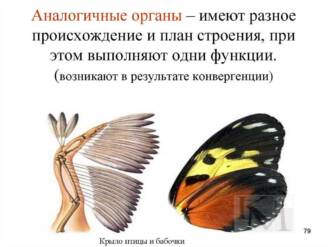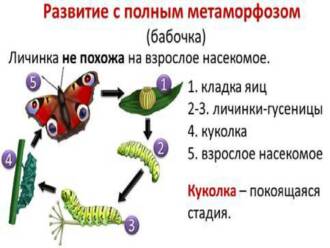
Eyes on butterfly wings are one of the amazing natural phenomena that many scientists study and try to explain. These defense mechanisms are an evolutionary example of mimicry, where one species mimics another to protect itself from predators.
Butterflies with eyes on their wings create the illusion of larger size and danger, diverting the attention of predators from their vulnerable body. Scientists are studying how these eyes form and develop to understand which genes are responsible for their appearance.
In addition, researchers are interested in how butterflies use their eyes in practice. Some species may flash these eyes to scare away predators or attract a mate. This opens up new horizons for the study of communication in the world of insects.
Studying the eyes on the wings of butterflies allows scientists to better understand the mechanisms of evolution and defense in nature. These intricate structures are unique objects of study that help expand our knowledge of the diversity and beauty of insects.
Defense Mechanisms: Studying the Eyes on Butterfly Wings

The ocelli on butterfly wings are an interesting defense mechanism that has attracted the attention of scientists. These bright, round spots resembling eyes can distract predators from vulnerable parts of the butterfly's body, such as the head or body.
Studying the eyes on butterfly wings allows scientists to understand how these mechanisms evolved and how they help butterflies survive. Research shows that the ocelli on the wings come in different shapes and colors, which may indicate different kinds of defensive strategies.
One possible function of the ocelli on wings is their role in creating the illusion of movement. Such a movement can confuse predators and make them indecisive in attacking a butterfly. In addition, the eyes can serve as a signal to the appropriate insect species, which may determine that the butterfly is not attractive to feed on.
Studying the eyes on butterfly wings also allows scientists to better understand the mechanisms of evolution and development of defense mechanisms in animals. This may be of great practical importance for the development of new methods of protection against predators and parasites.
Why are scientists interested in the eyes on butterfly wings?
The ocelli on butterfly wings are bright, rounded patterns that resemble eyes. These patterns are of great importance to scientists, as they play an important role in protecting butterflies from predators.
One of the main mechanisms used by the eyes on the wings of butterflies is deception. Such patterns can distract the attention of predators, switching it from vulnerable parts of the body to fixed eyes on the wings. This allows the butterflies to survive in situations where they are being chased by predators.
In addition, the eyes on the wings of butterflies can serve as a danger signal. Bright and contrasting patterns can warn predators about the presence of toxic substances in the body of butterflies. Thus, these patterns help to prevent predation and protect butterflies from trouble.
The study of ocelli on butterfly wings allows scientists to better understand the principles of protection in nature. Studying these patterns helps uncover the mechanisms that allow animals to survive and adapt to their environment. This knowledge can be used to develop new methods of protection and control of predators.
Developing an understanding of defense mechanisms in nature
Over the years, scientists have explored various aspects of the defense mechanisms that living organisms have evolved in nature. These mechanisms allow them to survive in unpredictable and dangerous environments while protecting them from predators or other threats. One of the most interesting objects of study was the eyes on the wings of butterflies.
The eyes on butterfly wings are round or oval spots that look like human eyes. Thanks to this pattern on the wings, the butterfly creates the illusion of having a face or eyes, which can distract or confuse a predator. Such a defense mechanism is called mimicry and serves to deceive and scare away predators.
Studies have shown that the eyes on butterfly wings evolved as a result of natural selection. Butterflies with brighter, more realistic eyes were more likely to survive and pass on their genes to the next generation. Thus, defense mechanisms, such as the eyes on butterfly wings, became an effective means of survival in nature.
Understanding defense mechanisms in nature is essential for science and practical applications. The study of these mechanisms can help create new methods of defense against predators or develop new technologies inspired by nature. In addition, the development of our understanding of defense mechanisms may lead to new discoveries and discoveries that will help us better understand nature and its amazing adaptations.
The connection of the eye on the wings of butterflies with evolution
The eyes on the wings of butterflies are one of the defense mechanisms of these insects and are closely related to the process of evolution. They are round or oval spots that can mimic the real eyes of predatory animals.
Evolutionary peephole function
The eyespots on the wings of butterflies have an important evolutionary function - they serve as a means of protection from predators. This defense mechanism is called mimicry and allows butterflies to survive in an environment where they are hunted by many predatory animals.
Mimicry and survival
The eyes on the wings of butterflies can serve as a signal to predators that the butterfly is dangerous or unpleasant to eat. This is due to the fact that many predators have an instinctive fear of eyes or faces, so when they see eyes on butterfly wings, they refuse to attack.
Mimicry can also help butterflies blend into their environment and become invisible to predators. The eyes on butterfly wings can mimic the eyes of other animals, or simply serve as a distraction, diverting the predator's attention from the actual body of the butterfly.
evolutionary change
The eyes on butterfly wings can change during evolution. Some types of butterflies have very realistic eyes that can confuse even an experienced predator. Other species may have eyes surrounded by bright colors to attract the attention of a predator and distract it from itself.
Conclusion
The ocelli on the wings of butterflies are a defense mechanism evolved to ensure the survival of these insects in an environment where they are preyed upon by predators. The study of this mechanism allows scientists to better understand the processes of evolution and adaptation in nature.
Unique Features of Eyes on Butterfly Wings

The eyes on butterfly wings are unique structures that are of great interest to scientists. These bright, rounded eye-like spots are located on the upper side of the wings and are one of the defense mechanisms of these insects.
The eyes on butterfly wings can be of different colors and sizes. They can be bright and contrasting, attracting the attention of predators and distracting them from the vulnerable parts of the body of butterflies. In addition, the ocelli can mimic the eyes of predators, giving the illusion of larger size and danger.
These structures play an important role in protecting butterflies from predators. At the sight of a peephole, many predators are afraid and do not risk attacking butterflies. Thus, the eyes on the wings of butterflies help them to avoid danger and survive.
Studies have shown that ocelli on butterfly wings can influence the behavior of predators. For example, some bird species avoid attacking butterflies with eyes, while others may only attack butterflies with more realistic eyes.
Thus, the ocelli on butterfly wings represent unique features that help these insects survive in harsh natural environments. The study of these structures allows scientists to better understand the mechanisms of protection and evolution of butterflies, and can also be applied in various fields, for example, in the creation of new methods of protection against predators.
Butterflies and their camouflage abilities
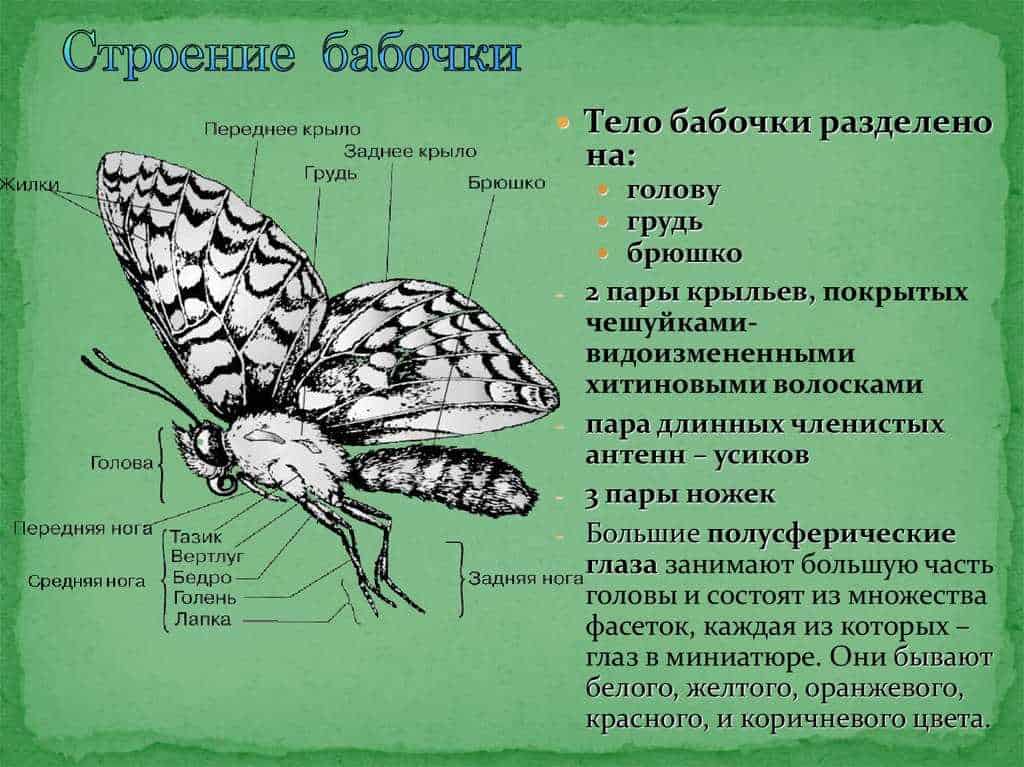
Butterflies are amazing creatures with fantastic camouflage abilities. They are able to blend in perfectly with their surroundings due to their coloration and patterns on their wings. These defense mechanisms help them avoid danger and go unnoticed by predators.
Wing coloring butterflies is one of the main factors that provide them with camouflage. In some species, the wings are green in color, which allows them to blend in with the vegetation. Other species have wings with a brown pattern that resembles tree bark or rotten foliage. This coloring allows butterflies to hide on trees and stones, remaining unnoticed.
Patterns on the wings also play an important role in the camouflage of butterflies. They can imitate various objects or dangerous predators, creating an illusion and distracting attention. Some butterflies have patterns on their wings that look like the eyes of birds of prey or snakes. This is a defense mechanism that diverts the attention of predators and makes them give up the attack.
Butterflies can also use behavior for disguise. They may move slowly or remain still, imitating leaves or flowers. Some species of butterflies can even imitate the movements and behavior of other insects so as not to arouse suspicion.
Studying the camouflage abilities of butterflies is helping scientists better understand the evolution and defense mechanisms of living organisms. Such research can be applied in various fields, for example, in the creation of protective camouflage materials or robots capable of camouflaging in the environment.
Explanation of the phenomenon of eyes on the wings of butterflies
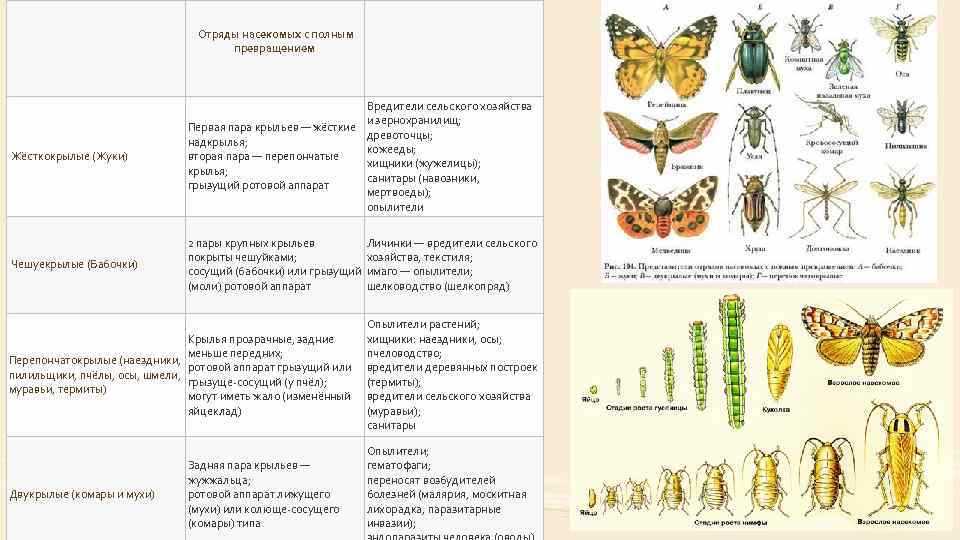
Butterfly wing eyes are one of the most fascinating natural phenomena that have attracted the attention of scientists. These eyes are rounded spots of various sizes and colors located on the wings of many species of butterflies. Although these spots are often decorative and serve to attract the opposite sex, their main function is to protect butterflies from predators.
One of the main defense mechanisms provided by the eyes on the wings of butterflies is mimicry. Eyes create the illusion that the butterfly has eyes, which can intimidate or distract the enemy. When a butterfly spreads its wings and shows bright and expressive eyes, it gives the impression of a threatening and dangerous creature, which can confuse a predator and make it retreat.
Besides, eyes on butterfly wings can also serve to reflect light. Thanks to their round shape and bright hue, they attract attention and reflect light, creating the effect of a glare or glare movements. This can confuse a predator or obscure the true position of the butterfly, making it harder to spot.
Also eyes on butterfly wings can serve as a distraction for predators. When a butterfly feels threatened, it can turn sideways and show eyes on its wings. This creates a distraction effect that allows the butterfly to escape while the predator is focused on the decoy. Thus, the eyes on the wings of butterflies help them survive in a harsh natural environment and go unnoticed by predators.
Examples of butterfly species with eyes on wings

1. Scoop butterfly
Scoop butterfly (Calyptra thalictri) is a species of butterflies from the scoop family (Noctuidae). On the wings of this butterfly, you can see eyes that have a protective function. The eyes on the wings of the scoop butterfly serve to scare away predators and camouflage. When the butterfly spreads its wings, the eyes create the illusion of large eyes, which distracts enemies and forces them to retreat.
2. Sailboat
Swallowtails (Papilionidae) are a family of large, colorful butterflies known for their eyespots on their wings. These eyespots serve to deter predators and create the illusion of large size. Swallowtails migrate actively over long distances, using their eyespots to protect themselves from predators and to attract the attention of females.
3. Milk maker
Milkweeds (Ithomiini) are a family of butterflies that also have eyespots on their wings. The eyespots on milkweeds serve to camouflage them and to deter predators. These butterflies live in tropical forests and use their protection to survive in an environment where predators can be very dangerous.
Thus, butterflies with eyes on their wings, such as the moth, sailboat, and milkweed, use these defense mechanisms for their survival in nature. The eyes on the wings create the illusion of large eyes, scaring off predators and attracting the attention of females. These are examples of evolutionary adaptations that allow butterflies to thrive in their environment.
How do the eyes on the wings of butterflies affect their survival?

The ocelli on the wings of butterflies are a defense mechanism that helps them survive in the environment they are in. These eyes are rounded spots, similar to the eyes of predatory animals, and are located on the wings of butterflies.
One of the important effects that the eyes on the wings of butterflies have is protection from predators. When the butterfly is threatened, it can open and spread its wings strongly, showing bright and conspicuous eyes. This creates the illusion of a large and dangerous creature, which can scare away a predator and save the life of a butterfly.
Butterfly wing eyes can also be used in mate competition. Male butterflies with eyes on their wings are more likely to attract the attention of females and compete for the right to breed. Eyes create an intimidating effect and an impression of strength, which may be attractive to females.
Moreover, the eyes on the wings of butterflies can serve as camouflage. They can divert the attention of predators from the vulnerable parts of the butterfly's body, directing their attention to the wings. This allows the butterflies to increase their chances of survival in an environment where they are susceptible to predation.
Thus, the eyes on the wings of butterflies perform several important functions that help them survive and reproduce. They protect butterflies from predators, serve as a signal to attract a mate, and provide camouflage. The study of these defense mechanisms allows scientists to better understand the principles of evolution and adaptation of living organisms.
Eyes on butterfly wings: a warning to predators
Butterfly eyes are one of the most amazing and breathtaking phenomena in the natural world. They are bright rounded spots that have the shape and color of the eyes of animals. Despite their beauty, these eyes have an important protective function.
The eyes on butterfly wings give the illusion that the butterfly has large eyes, which makes predators think twice before attacking. This is a warning to predators that can be scared off and stopped in their actions.
The mechanism of defense with the help of a peephole on the wings is called mimicry. Butterflies with eyes on their wings can resemble predatory animals such as birds or lizards. This allows the butterflies to survive and avoid being attacked by predators that may be intimidated and stray from their prey.
In addition, ocelli on butterfly wings can also serve to divert the predator's attention away from the actual vulnerable part of the butterfly's body. Thanks to this, butterflies can increase their chances of survival and reproduction.
The study of the eyes on butterfly wings is helping scientists understand the deeper aspects of evolution and adaptation in nature. These eyes have become the object of study to find out how they develop and what mechanisms underlie them. This is an important area of research that helps us better understand the diversity and beauty of the living world.
Defense mechanisms of other animals and plants
The natural world is full of amazing defense mechanisms that animals and plants have developed to protect themselves from predators or dangerous environmental conditions. These mechanisms allow them to survive and reproduce successfully, ensuring the continuation of their species.
Mimicry

One of the best known defense mechanisms is mimicry. Some animals and plants mimic the appearance of other organisms or their environment to confuse or hide from predators. For example, butterflies can mimic leaves or tree branches, and some animals take on the color and shape of the surrounding landscape to become invisible.
Whitening
Bleaching is a defense mechanism in which plants or animals change the color of their skin, fur, or feathers to match their environment. For example, polar bears have white fur that helps them hide in the snowy landscapes of the Arctic. Plants in desert areas may also bleach to reflect the sun's rays and retain moisture.
Toxicity
Some animals and plants have toxic substances that repel predators and prevent them from attacking. For example, venomous snakes are brightly colored to warn predators of their danger. Plants such as poppy heads or pink milkweeds contain poisonous substances that protect them from animals and insects.
Camouflage

Camouflage is another effective defense mechanism that allows animals and plants to blend in with their surroundings. They may have a color, texture, or shape that makes them invisible to predators. For example, sand camouflage fish have a sandy color that allows them to hide on the ocean floor. Plants may have leaves with a texture or coloration that helps them blend in with their surroundings.
All these defense mechanisms demonstrate the excellent adaptability of nature and allow living organisms to survive in a wide variety of conditions.
The role of eyes on butterfly wings in the ecosystem
The eyes on the wings of butterflies are a bright and noticeable element of their appearance. They play an important role in the ecosystem by performing several functions.
Mimicry and defense against predators
The ocelli on the wings of butterflies serve as a means of mimicry, allowing them to survive in an environment where predators constantly exist. These bright spots on the wings create the illusion of eyes, diverting the attention of predators from vulnerable body parts of butterflies, such as the head or body. Thus, the eyes on the wings of butterflies serve as a protective camouflage and help them avoid predation.
Scaring off predators and attacking competitors
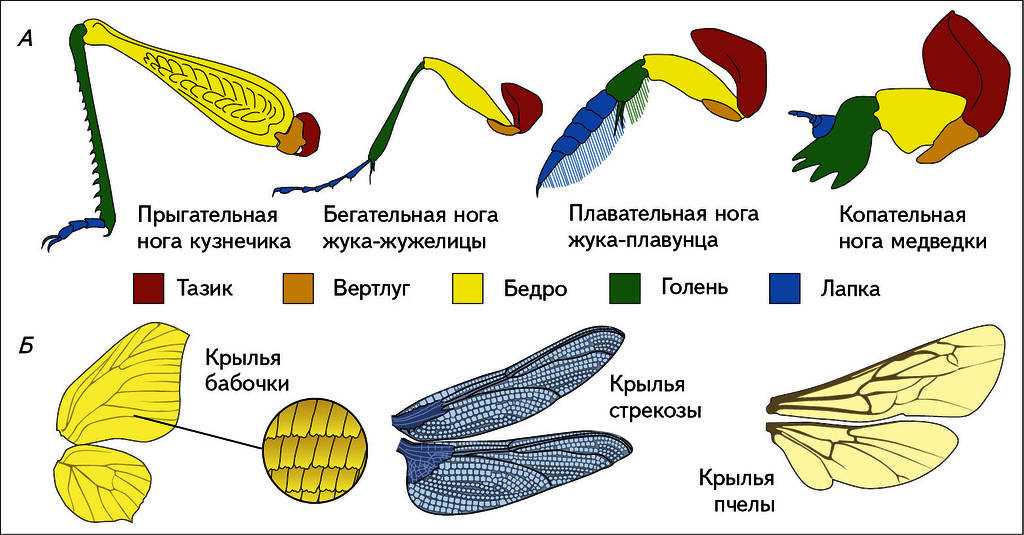
The bright eyes on the wings of butterflies can also serve as a scare signal for predators. They give the impression of being larger and more dangerous, making predators think before attacking. In addition, butterflies may use their eyes to attack competitors for territory or food. They may spread their wings and show their eyes to startle or intimidate other individuals.
Attracting partners and breeding
The ocelli on the wings of butterflies can also serve as a signal to attract mates during breeding. Bright and noticeable eyes can attract the attention of the opposite sex and serve as a signal of readiness for mating. Thus, the eyes on the wings of butterflies play an important role in the reproduction and maintenance of the population of these insects in the ecosystem.
Future research on ocelli on butterfly wings

The eyespots on butterfly wings are unique structures that attract the attention of scientists due to their complexity and functionality. Due to their appearance and color scheme, they are able to distract enemies from vulnerable parts of the butterfly's body and serve as a defense mechanism.
In future studies, a more detailed study of the structure and formation of eyes on the wings of butterflies is planned. Scientists hope to uncover all the secrets of these mysterious formations and find out how they are formed and which genes are responsible for their development.
Also an important direction for future research is the study of the role of ocelli in male negotiations and selection of females. Scientists suggest that the eyes on butterfly wings may play an important role in attracting mates and competing with rivals.
Another interesting aspect of research is the role of ocelli in defense against predators. Scientists suggest that the eyes can imitate the eyes of predatory animals and divert their attention from butterflies. Research in this direction will provide a better understanding of how butterflies use their eyes to survive in nature.
Future research on ocelli on butterfly wings will aim to uncover all the mysteries of these amazing structures and their role in protecting and communicating butterflies. Scientists hope that the results of the research will help to better understand the evolution and adaptation of butterflies to their environment.

